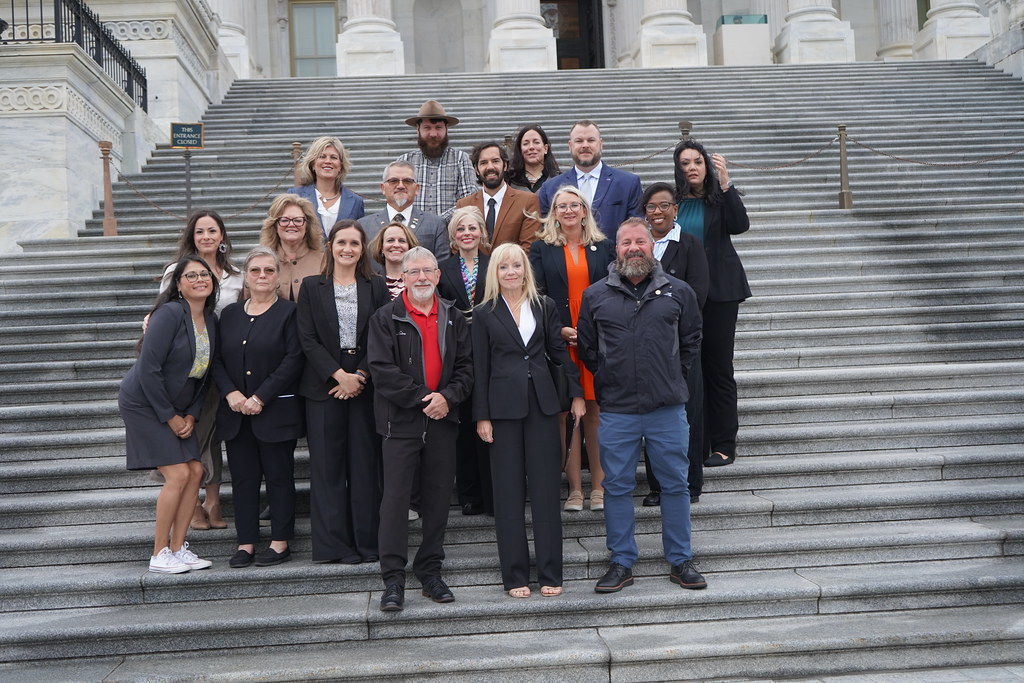Workforce programs are on the chopping block and businesses are sounding the alarm
Right now, in Washington D.C., Congress is debating appropriations for Fiscal Year 2026 – and funding for federal workforce programs is at risk. Federally funded programs like the Workforce Innovation and Opportunity Act (WIOA), career and technical education, adult education, and registered apprenticeships are essential to helping employers hire skilled workers and helping workers to access the training they need to land in-demand jobs. Both President Trump and the House of Representatives have proposed deep cuts that would undermine business competitiveness and worker opportunity at a time when demand for talent is at an all-time high.
That’s why this week, nineteen people from the business network traveled to Washington, D.C. as part of Business Leaders United (BLU)’s national fly-in. They carried a clear and urgent message to Congress: protect and expand investments in skills training, workforce development, and the support services that help students train. In a strong show of support, nearly 100 businesses and associations signed on to a letter organized by Business Leaders United.
"At AdventHealth, we are deeply committed to investing in our team members and the communities we serve. Federal investments in skills training help us expand these opportunities at scale—empowering more people to grow their careers in health care and ensuring stronger, healthier communities," said Mistie Palmer, Director, Workforce Development at AdventHealth
We Can’t Cut Workforce Funding
Employers from nearly every industry – from construction to health care to advanced manufacturing – are struggling to find workers with the right skills. The challenges are mounting:
- A wave of retirements is shrinking the experienced workforce.
- Rapid advances in technology, digital tools, automation, and artificial intelligence are transforming how industries operate, and the skills workers need to succeed.
- Competition across industries is intensifying.
- Workers are facing barriers like childcare, transportation, and career navigation that keep them from completing training.
Despite these realities, our country has chronically under-invested in our workforce system and now we lag behind peer nations. The consequences are real: 52% of jobs require skills training beyond high school but not a four-year degree. Yet just 43% of workers have had access to the training and support they need to fill these roles. And, 92% of today’s jobs require digital skills but only 2/3 of workers have the foundational digital skills necessary to enter and thrive in today’s jobs.
Employers Deliver the Message: Protect Workforce Investments
During the fly-in, BLU members urged Congress to act on three key priorities:
- Robust funding for workforce programs. Workforce grants must be funded without cuts to ensure businesses can hire the skilled workers they need.
- Dedicated funding for sector partnerships. These employer-driven partnerships between businesses, colleges, and community organizations tailor training to industry needs and expand access for women, workers of color, and others underrepresented in high-demand fields.
- Maintain the maximum Pell Grant. With Pell set to expand to shorter-term programs in 2026, maintaining funding is essential to keep education and training affordable for working learners.
"Federally funded skills training and workforce development programs are essential to our nation’s strength - ensuring that workers are prepared for high-quality jobs that build and maintain the infrastructure our communities and economy rely on every day said Andrea Alvarez, Director of Workforce Development, Fessler & Bowman, Inc.
Employers also emphasized the importance of wraparound supports—like childcare, transportation, and career guidance—that often determine whether a worker finishes training and secures a good job.
Looking Ahead
Congress has an opportunity to deliver what both employers and workers need: strong, stable funding for workforce programs. This isn’t just smart policy, it’s popular. Recent polling shows that 82% of voters support increased government investment in skills training. That support suggests that people on both sides of the political aisle know that investments in skills training are investments in America’s future.
